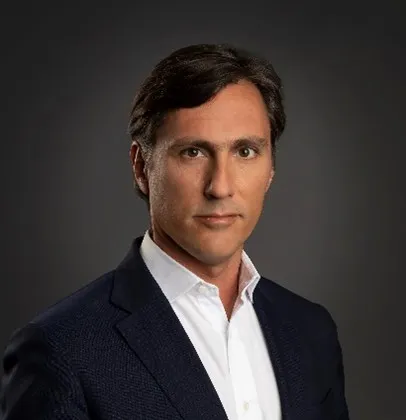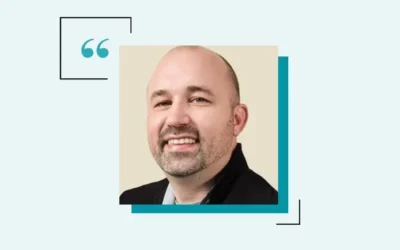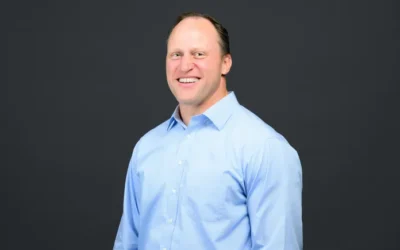Giulio Rindi, CFO for commercial and new payment flows at Mastercard, has spent more than a decade leading the company’s global growth across Europe, international markets and now its expansion into new payment technologies.
As CFOs know, as the payments landscape shifts, finance teams are expected to move faster, manage greater complexity and guide their companies through an unpredictable global economy. Rindi’s role encompasses this, as he oversees the financial strategy behind Mastercard’s efforts to modernize consumer and B2B payment flows, strengthen resilience and unlock new opportunities for the business.
In this conversation with CFO.com, he reflects on the evolution of the CFO role, lessons from leading finance across multiple continents, how emerging payment trends are reshaping the finance function and managing the personal trade-offs that come with having a career path that has spanned the globe.
Giulio Rindi

CFO, commercial and new payment flows, Mastercard
First CFO position: 2015
Notable previous employers:
- American Express
- Pirelli
- BDO
This interview has been edited for brevity and clarity.
ADAM ZAKI: Mastercard processes a huge amount of data. As a CFO, how do you ensure it’s optimized and focus on what matters versus the noise?
GIULIO RINDI: As far as financials and financial KPIs are concerned, we are very well organized and rely on very solid data sources, with consistency across the organization. When you are a global company, consistency is crucial.
The real opportunity for many organizations now is to combine financial KPIs with operational KPIs. The reality is you have your financials in your ERP, sales-related data in your CRM and operational datasets in different systems. Bringing it all together is complicated. To have it available in real time and in a user-friendly dashboard is even more challenging.
That’s the next big opportunity for many organizations: Efficiently integrating financial and operational KPIs and connecting the dots across the business at 360 degrees. It’s almost like a superpower to drive outcomes and efficient execution.
We, like other big corporations, have very good control of the finances. But when you add operational KPIs to the financials, you gain true actionable insights: Why do we see certain trends? Which operational aspects of the business do we need to optimize? What should we invest in? How do we go to the market faster?
For example, time-to-revenue is something we focus on a lot. You sign a deal with a customer after six, 12 or 18 months of negotiations, but then you might not see volumes or revenue materializing as per the business plan or contract terms.
In a global organization with thousands of sales and business development people signing deals, I want to know if those deals are being executed. The connection between financial and operational KPIs gives you real-time visibility and the ability to drive execution excellence.
Payment modernization is a huge topic right now. Why do B2B payments still lag behind consumer payments in terms of speed and simplicity, and how can technology help close that gap?
In the consumer world, payments are now part of our daily lives. We have frictionless experiences, security and user-friendly digital interfaces. And then there is also an element of frequency — you’re making certain payments often, and that smooths your experience and allows the industry to evolve faster.
In B2B payments, it’s more complicated. There is more friction, and therefore the modernization you are talking about is needed and points to the significant opportunity in front of us.
We continue to invest in products and solutions that will make B2B payments and money movement domestically and internationally more efficient and frictionless.
I’ll give you one example: We have a proprietary virtual card solution that businesses can embed in their ERP systems. That is basically a way of managing payments directly through your ERP system. We are collaborating with key players in this space, as well as local ERPs, to make sure our solution is compatible and interoperable.
Technology like this can help CFOs and treasurers manage accounts payable more efficiently. If you embed a virtual card solution in your ERP, you can manage payments in an automated way, you can drive working capital optimization, you can have more control and you can optimize your credit lines and expense base.
These are the challenges we see corporations facing today globally, and our solutions are focused on making payments smarter and businesses stronger. I believe this is going to be the future.
How do you view emerging technologies like stablecoins, embedded finance and blockchain? Are they creating real efficiencies in finance today, or are they more about long-term strategic investment?
I cannot really connect stablecoin to immediate efficiency within the finance function. What I can say is, of course, we are looking at stablecoins as a business. We’re also looking at crypto and blockchain. We work with our tech partners to decide where to invest.
It goes back to capital allocation and investment prioritization. There are trends CFOs can’t afford to miss. Finance needs to be on board. Stablecoins are one of those. We need to be there, we need to allocate capital and that’s what we are doing. Then we will see how that technology will shape payments going forward.
It’s about investment prioritization, capital allocation and staying in the race. We can do that as a company, which is both great and exciting.
What is collaboration like with the other divisional CFOs at Mastercard? Do you reach out to them for insight, or is it more ad hoc?
First and foremost, collaboration is all about personal relationships. For me, it’s about creating genuine connections with other CFOs, whether it’s other business unit CFOs, divisional CFOs or regional CFOs, but also with corporate functions such as FP&A, investor relations, real estate, sourcing, tax and controllership.
Building those relationships over time is fundamental. You can have all the tools and knowledge you want, but without those relationships, you move slowly and inefficiently.
So in this case, it’s not really about technology or processes. It’s about the ability to connect at a personal level, to pick up the phone, to help your teams connect the dots. From there, you can develop tools or do ad hoc analysis, whether it’s short-term or medium-to-long-term sustainable solutions.
Sometimes in organizations, things are done without that clarity. Maybe there’s a business unit agenda or a personal agenda and you can’t put it in context. For me, it’s simple: Shareholder and stakeholder interests come first. That works across geographies and cultures.
You’ve held leadership roles across the world, managing people from many different cultures and backgrounds. How has this experience helped you professionally?
Every time you change a company or a country, you need to adapt. There is an element of flexibility and adaptability.
First, I think it’s a privilege to be able to have all these opportunities. You need to be willing to embrace those because there is a price to pay from a personal standpoint. But it’s very enriching — rewarding personally for your family, but also professionally.
It also comes with the responsibility of leading larger teams across different geographies with different cultural backgrounds. But I have found it extremely intellectually stimulating. It’s helped me grow significantly because you face different mindsets, cultures and approaches.
It’s all about super clear and crisp communication, a pragmatic approach, transparency and having the team’s roles and responsibilities well defined. These are the key ingredients to support the delivery of the financial objectives and the execution of the strategy, and ultimately drive long-term sustainable shareholder value.
You mentioned earlier the personal trade-offs of having a global role. How have you balanced building your global career with being a good partner, parent and friend?
I like to think of this like a stool with three legs. The legs are family, friends and professional career. Without one of those legs, you are unstable.
“I grew up in Rome, Italy, and didn’t move for the first eighteen years of my life. Friends were everything for me, so I understand the value of stability and strong friendships. For my children, it’s complicated, but it’s also enriching. They have a very unique perspective on the world now.”

Giulio Rindi
CFO, Commerical and New Payment Flows, Mastercard
Leaders often talk a lot about professional opportunity and growth. I’d say that’s the easy part. But family and social life are critical. Business leaders who embrace these types of professional journeys need to have a partner who supports them, the adventures that come with it, and must be willing to make some sacrifices themselves. It’s not easy to change jobs and countries every three or four years.
I’ve noticed children are amazing at adapting. It’s easier when they are younger, like 12 and under. It becomes more complicated and challenging for them after that. But again, it’s a trade-off between giving them a broad perspective on the world versus more stability, which is also valuable.
I grew up in Rome, Italy, and didn’t move for the first 18 years of my life. Friends were everything for me, so I understand the value of stability and strong friendships. For my children, it’s complicated, but it’s also enriching. They have a very unique perspective on the world now.
Friendships are another fundamental aspect. I try to invest quality time in keeping in touch with old friends and building many new friendships throughout the journey, everywhere we live. It’s a different dynamic, but it’s incredible.
We live in a global world. We’re all connected. It’s easier now than when I left home. Back then, I didn’t have an iPhone, a BlackBerry or even an email. Now it’s easier to travel, easier to connect. So overall, it’s a balancing act — a dance. You need all three legs of the stool to be very solid.





